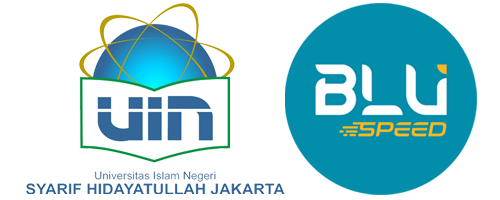Generational Poverty: Breaking the Chain through Education
Mohammad Nur Rianto Al Arif
Professor at Syarif Hidayatullah State Islamic University Jakarta/Assistant to the President's Special Envoy for Food Security/Secretary General of the Indonesian Lecturers Association
Poverty is inevitably passed down from one generation to the next, making it the greatest irony in the nation’s development journey towards the golden future.
Although Indonesia has grown into a developing country with impressive economic achievements, the harsh reality in many remote areas remains unchanged—children from poor families remain the most vulnerable to dropping out of school.
As they grow older, they find themselves trapped in the same place, growing up without insufficient education, skills, and access to better opportunities.
This is what we call the vicious cycle of poverty, where it leads to factors that, in turn, worsen poverty and create a cycle that is impossible to break.
According to Nurkse (1953), there are four factors that cause the vicious cycle of poverty. The first factor is low productivity due to poor quality of human resources. Thus, it results in low income, which limits the ability to save and invest. This condition further leads to a lack of investment needed to increase income. As a result, the final factor, the market becomes unable to provide fair access to needed resources.
This condition cannot be allowed to persist. If the roots of poverty are not eradicated early, Indonesia’s dream of becoming a developed country will perish.
In this context, the establishment of the Sekolah Rakyat initiated by President Prabowo Subianto is highly relevant. More than just an alternative education program, it is a form of social intervention designed to break the cycle of poverty at its deepest root: basic education.
It is not an exaggeration to say that education is the golden key to breaking free from poverty. As Nelson Mandela once said, “Education is the most powerful weapon which you can use to change the world.”.
In Indonesia, education carries an even broader meaning than just the transfer of knowledge; it serves as a social bridge between poverty and prosperity.
However, for many underprivileged families, it seems distant and out of reach. Expensive tuition fees, long distances to schools, irrelevant curricula, and a lack of social support force many children from poor families to abandon their right for education forever.
Data from the Ministry of Social Affairs (Kemensos) regarding the implementation of the Sekolah Rakyat program revealed that 227,000 elementary school-aged children have never attended school or have dropped out. This number drastically increases at the junior high school level to 499,000, and at the senior high school level to 3.4 million.
The problem becomes even more complex when considering that many children from underprivileged families are not only academically behind, but also suffer from poor nutrition, low early literacy, and lack of family support.
Education, therefore, is not just about schools and teachers, but an entire ecosystem involving homes, communities, and national policies.
Sekolah Rakyat is not merely a physical building or an imaginary corrupt bureaucrat project—it is a new philosophy of education. It must exist within communities, reach the marginalized, and liberate people from underdevelopment of knowledge.
He believes that the Indonesian government must be tangibly present for the underprivileged, and education is the most strategic way to do so.
This program was built with the spirit of equalizing access to quality education across even the most remote villages.
Sekolah Rakyat is not designed to compete with formal schools, but to complement, enhance, and reach those who have been left out of national education development.
Although it serves a similar function to regular schools in providing basic and secondary education, Sekolah Rakyat differs in several key aspects, from curriculum to facilities.
- Curriculum: Sekolah Rakyat uses the national curriculum with additional character-building content, such as lessons in leadership, nationalism, and life skills.
- Teachers: The program will recruit up to 60,000 teachers nationwide, including volunteer educators who usually serve in the 3T regions (underdeveloped, frontier, and outermost areas).
- Students: Sekolah Rakyat is exclusively intended for children from households in deciles 1 and 2—the poorest 20% nationally, based on the National Socio-Economic Single Data (DTSEN).
- Placement: The school will be built in strategic locations to reach areas with limited access to education.
- Facilities: Sekolah Rakyat is designed as a free boarding school. Students will live in dormitories and receive meals, learning facilities, and other basic needs at no cost.
Sekolah Rakyat changes the narrative of educational sector from “pay to win” to “free to play”. The program becomes a social nurturing space that creates equality from an early age.
By learning together in a friendly environment, children from diverse backgrounds learn to respect one another and grow together.
Moreover, this program also brings emotional relief to parents. Many poor parents have long been haunted by guilt for not being able to send their children to school. Sekolah Rakyat gives them a new hope that poverty is no longer an issue.
Of course, Sekolah Rakyat will not face any challenges. The first is the availability of dedicated teachers. Teaching in remote or impoverished areas requires a strong calling and special training. This might explain why 160 teachers initially assigned to the program ended up step out.
The second challenge lies in ensuring the program’s sustainable funding. The government must secure a stable long-term budget, including potential synergy with CSR, zakat funds, and village funds.
The next challenge is cross-sector coordination. Education cannot stand alone; all relevant elements must work together to make this program successful.
The final challenge involves participatory monitoring and evaluation. The success of Sekolah Rakyat must be measured not only by the number of students but also by social changes within communities.
However, if all elements move together, Sekolah Rakyat can become the turning point for the most impactful human resource development in Indonesia.
As Indonesia aspires to become a developed nation by 2045, the greatest investment relies on its young generation.
Sekolah Rakyat becomes a long-term social investment whose results may not be immediately visible but will shape the nation’s future in decades.
By breaking the chain of poverty through inclusive basic education, Sekolah Rakyat also addresses today’s needs of Indonesian people.
Education gives children the opportunity to grow intelligent, healthy, and independent. At the same time, it solves future issues of unemployment, crime, and social inequality as a result of poor education.
The Sekolah Rakyat program, which will be implemented directy under President Prabowo's order, is a tangible manifestation of the principle of social justice.
Education not only enlightens the nation but also liberates people from structural injustice. It is not an utopist program but a grounded breakthrough.
Amid global challenges, economic crises, and persistent social inequality, this nation needs more policies that side with the most vulnerable.
Sekolah Rakyat is one of those answers.
Not only because it provides free education, but because it revives hope. If we want to see a better Indonesia, we must start with those who have been left furthest behind educationally.
(This article was published on kompas.id on Friday, August 1, 2025)

